Subfamily Dactylioceratinae Rank Genus Subclass Ammonites | ||
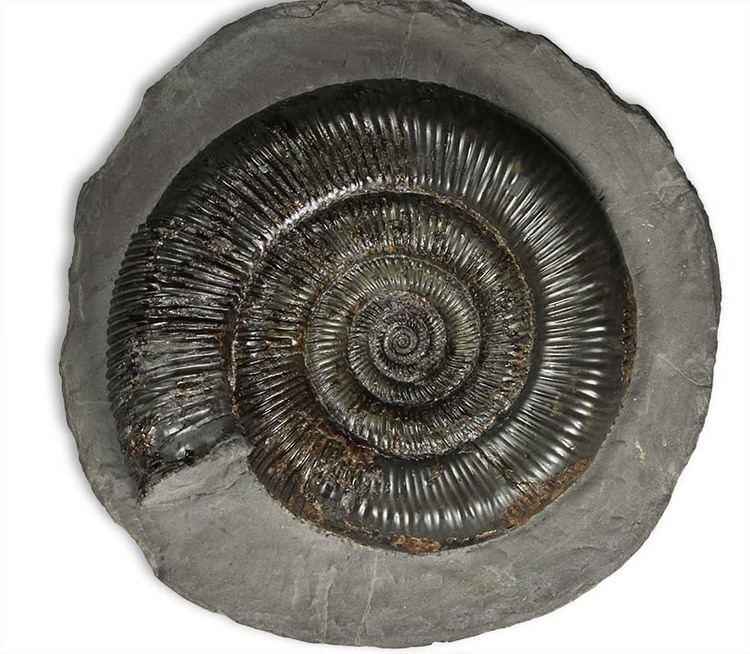 | ||
Similar Ammonites, Harpoceras, Hildoceras, Pleuroceras, Grammoceras | ||
Dactylioceras was a widespread genus of ammonites from the Lower Jurassic period, approximately 180 million years ago (mya).
Contents
Etymology
The name Dactylioceras comes from the Greek dactyl, meaning “finger”, and refers to the shell’s branching ribs.
Description
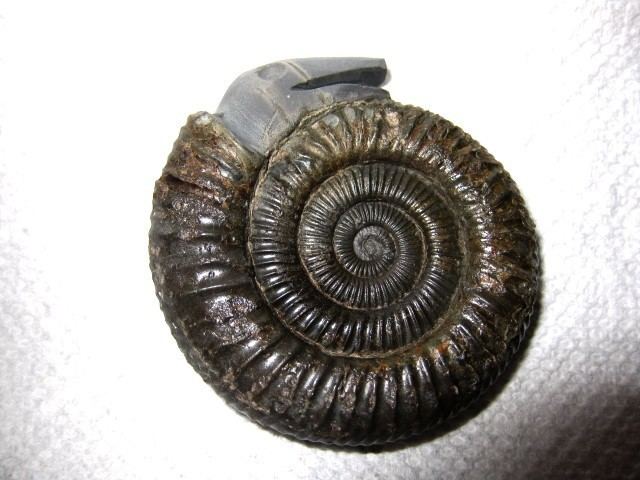
Dactylioceras are generally small, averaging 65 millimetres (2.6 in) in diameter. They have a strong, ribbed shell. The ribs are slightly inclined forward, running over the outer edge, and either simple or forking at outer end. Though they eventually died out 180 mya, their style of ribbing was copied by numerous subsequent ammonite genera until the whole group became extinct 66 million years ago with the dinosaurs.
Ecology
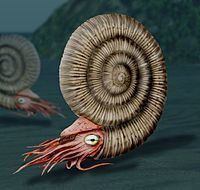
Dactylioceras probably lived by scavenging on the sea floor. Mass mortality specimens of Dactylioceras are common, and perhaps suggest that these ammonites may often have died shortly after spawning. The dead shells were probably gently washed up into a shell bank on the margins of the Lower Jurassic seas. Flow tank experiments show that Dactylioceras was probably a slow swimmer.
Distribution
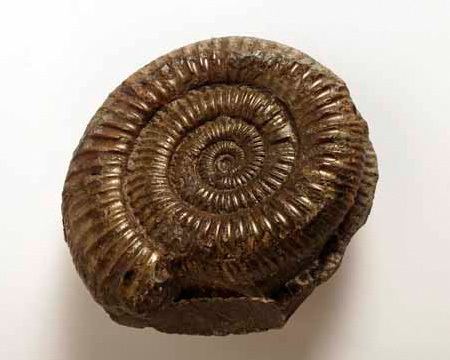
Dactylioceras has been collected from almost every continent, and was one of the most successful ammonite lineages ever. They are abundant throughout Europe, with exceptionally fine specimens found in England and Germany. Like many other ammonites, the genus Dactylioceras is extremely important in biostratigraphy, being a key index fossil for identifying their region of the Jurassic.
Subgenera
Currently, 3 or 4 subgenera are considered to be valid. Number differs on authors opinions.
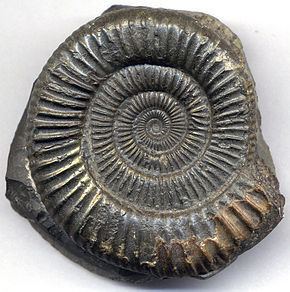
Species
Species within the genus Dactylioceras include:
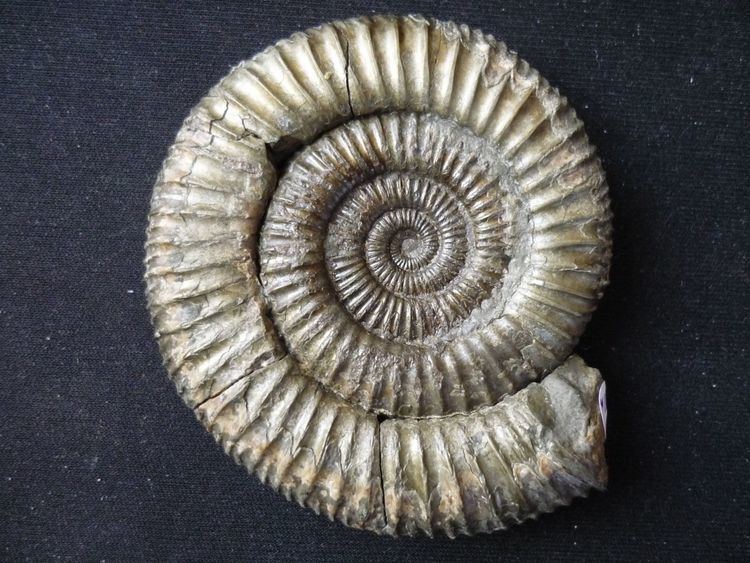
Dactylioceras commune has shells reaching a diameter of 9–11 centimetres (3.5–4.3 in). Usually the average diameter reach about 24.1 millimetres (0.95 in), while the average width is 8.20 millimetres (0.323 in).
In these small but strong shells ribs run straight or are slightly convex across the venter. These ribs are quite coarse on the outer whorls and finer on the inner whorls. The whorl section is as round as a circle.
Fossils of this species have been found in Lower Jurassic, Toarcian age of Canada, France, Italy, Russia, Serbia and Montenegro, United Kingdom and United States.
